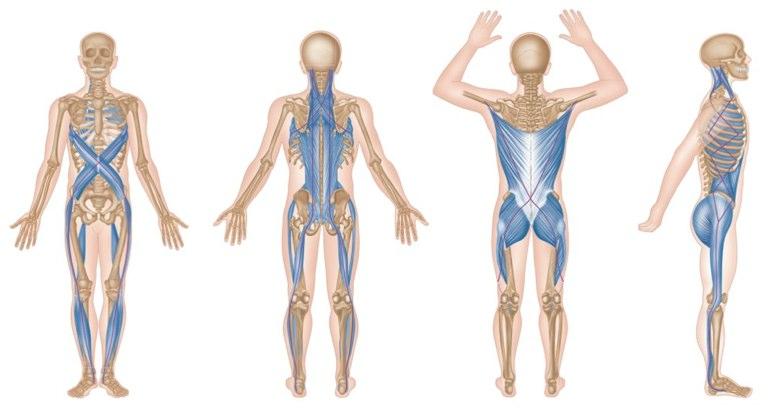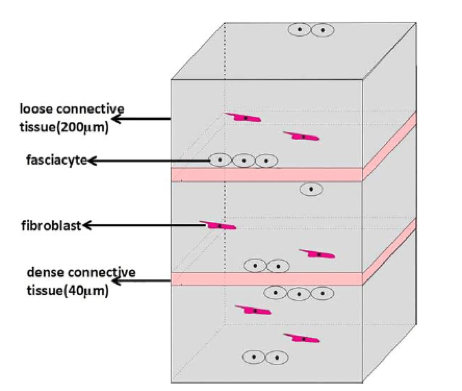Keeping up with Baseball Research: 9/10/2018
If you’ve been following along on Baseball Twitter, there’s been some interesting talk about the role and importance of fascia. It’s one of those topics that gets considerable attention in the therapy world, for better or for worse, and is a bit of a contentious topic.
There are very ‘pro-fascia’ camps and others that dismiss it altogether. While there is considerable amounts of research looking at fascia’s physiological properties, there isn’t quite as much to go on from a practical perspective. Making the jump from what’s available in the scientific literature to how it affects treatment, training, performance and health, isn’t an easy process.
In the latest edition of Keeping up with Baseball Research (9/10/2018), I will highlight some of the recent literature on fascia as well as some of the research that I’ve revisited once again to solidify my own rationale for what I do with my athletes.
Relevant Baseball Research: September 10th, 2018
Fascial Tissue Research in Sports Medicine: from Molecules to Tissue Adaptation, Injury and Diagnostics – Zügel M, Maganaris CN, Wilke J, et al. Br J Sports Med 2018.
If you’re looking for a good place to start learning about fascia then I would highly recommend checking out this recent consensus statement in the British Journal of Sports Medicine. I mentioned on Twitter that one of the best ways to get your feet wet in a topic is by searching out the latest literature review or consensus statement. It’s a no brainer, but in going this route you can get a good feel for what’s known, what’s being looked into, and who is researching it.
This particular consensus statement is a great example of that. The authors themselves are considered the world’s foremost experts on the topic of fascia, having established this consensus statement while attending the International CONNECT Conference (aimed at fostering scientific process towards a better understanding of fascial tissues in sports medicine).
What’s even better is that in starting with this review, you’re sure to find a few authors to follow (Schliep, Stecco, Langevin, etc), rabbit holes to go down, and amazing reveals through Google (check out this YouTube video I was sent).
Don’t let the eight or nine pages fool you, the consensus statement paper is loaded. From differentiating the terms ‘fascia’ and ‘fascial system’ to demystifying some of it’s physiology, the breadth of information is enough to get you off the ground.
Some quick hits:
-
“With its diverse components, the fascial system builds a three-dimensional continuum of soft, collagen- containing, loose and dense fibrous connective tissue that permeates the body and enables all body systems to operate in an integrated manner.” Looking at the body thru a complex systems lens seems to be where everyone is headed and looking into how complex systems behave is a great avenue to go down. The key here is that even from a tissue standpoint, it’s all connected and integrated.
- “Furthermore, despite convincing in vitro evidence for the existence of myofascial force transmission, its relative contribution to the occurrence of remote exercise effects under in vivo conditions has to be further elucidated.” We don’t have enough evidence to make grande suggestions that fascia is a major player in force transmission in vivo (real life), although we don’t have evidence suggesting the contrary. When dealing with real-time physiology, things just aren’t that simple.
- In regards to foam rolling: “Nevertheless, the physiological mechanisms of these reported effects remain unclear, although initial evidence suggests increases in arterial perfusion, enhanced fascial layer sliding and modified corticospinal excitability following treatment.” What foam rolling accomplishes is an interesting topic – one that often gets oversimplified as improving tissue quality or increasing mobility. It takes a little more unravelling than that, but following the citations in this section is a very good start.
Biotensegrity and Myofascial Chains: A Global Approach to an Integrated Kinetic Chain – S.L.Dischiavi, A.A.Wright, E.J.Hegedus, C.M.Bleakley, Medical Hypothesis 2017
The first sentence of this recent paper immediately caught my attention:
“Human movement is a complex orchestration of events involving many different body systems. Understanding how these systems interact during musculoskeletal movements can directly inform a variety of research fields including: injury etiology, injury prevention and therapeutic exercise prescription”
A common theme continues to be looking at the human body and it’s behaviour under a systems lens. Complex systems are integrated, interactive, and contain many different sublevels such that we must step outside a reductionist mindset when attempting to solve related problems.
To illustrate, I’ve posited a number of times in the past (here, here, here and here) that looking solely at one component in a injury equation (reductionism), like range of motion or singular tissue strength, will not be helpful in solving an issue within a complex system.
Human anatomy and physiology is almost incomprehensibly complex. It cannot be explained with linear thinking.

In this recent paper, Biotensegrity and Myofascial Chains, the authors explore a hypothetical new paradigm for neuromotor control and stability by way of a biotensegrity model of the musculoskeletal system. It explores the clinical and movement implications of viewing the body through a systems lens, by way of polyarticular myofascial chains.
It’s an interesting theory and the citations are definitely worth looking into.
Acute Effects of Lateral Thigh Foam Rolling on Arterial Tissue Perfusion... -Krause, F., Wilke, J., Niederer, D., Vogt, L., & Banzer, W. (2017). Trials, 18, 114. http://doi.org/10.1186/s13063-017-1866-y
The implementation of foam rolling can be found in pretty much every baseball training program. Sometimes it’s used as warm-up tool, other times as a cool down, and sometimes both. Players generally tend to feel better after rolling out, but the physiological mechanisms aren’t really well understood.
In their systematic review, Beardsley et al pointed out some of the benefits of rolling; including a reduction in DOMS (delayed muscle onset soreness), short-term increases in flexibility, and no immediate negative effect on athletic performance. This is something that I went into more detail on in my Recovery for Baseball resource.
There is a lot to like about foam rolling, and self myofascial release in general, and I think that as the research continues to come out, we will start learning a lot more about potential applications.
In this particular study, the authors looked at the acute effects of foam rolling on blood flow in the thigh. Participants performed just three sets of 45 seconds of rolling on the lateral thigh after which tissue perfusion changes were analyzed.
-
“our results indicate that blood flow of the lateral thigh increases significantly after foam rolling exercises in healthy participants. The advantages of enhanced blood flow are relevant for warm-up and recovery, and our data support the implementation of foam rolling if tissue circulation is required.”
Training Principles for Fascial Connective Tissues – Schleip, Muller, J Bodyw Mov Ther. 2013 Jan;17(1):103-15
Before we can go about claiming our exercises or drills are ‘training the fascia’, it would best suit us to understand some of the basic foundations. Although there is some overlap with the previous papers, Schleip et al goes into good detail on the background information necessary to understand prior to making training presumptions.
It talks about fascial remodelling, the catapult mechanism, hydration and water renewal, it’s role as a sensory organ and more, before providing suggested training guidelines. I won’t get into too much detail about the application section, but what you’ll notice is that most what is suggested is already considered in most training plans.
From a training perspective, I don’t think we need to go crazy or re-invent the wheel, to promote or prioritize adaptations to our fascia.
The Fasciacytes: A New Cell Devoted to Fascial Gliding Regulation – Stecco et al. Clin Anat. 2018 Jul;31(5):667-676
Saved the most intriguing (for me) for last.
If you haven’t heard the name Stecco in the context of fascia, then get ready for a couple decades of rabbit holes, as the Stecco family has been researching it for a long, long time.
This paper, which is almost literally hot off the press, was headed up by Carla Stecco (whom you may have noticed in the Youtube video in the first paper) and looked into a fascia-nating new cell type; the “fasciacyte“.
What is it, what does it do, and why is it important?
Deep fascia is a multilayered structure formed by densely packed collagen fibres, a few elastic fibres, and separated by layers of loose connective tissue. This loose connective tissue layer is rich in hyaluronan (HA) and it’s structure / composition is quite important for proper functioning of the deep fascia.
Thickening or densification of this loose connective tissue (and it’s extracellular matrix) can lead to a reduction or loss of fascial sliding, potentially compromising force transmission, movement, proprioceptive communication throughout the body and stability. (Chaitow 2014, Kumka 2012). It’s even been argued that this may be the source of myofascial pain (Stecco 2011).
In 2014, Stecco found that one of the key elements affecting fascial density seemed to be hyaluronan (HA). HA functions as a space filler, lubricator of joints, regulator of water homeostasis and facilitator of cell migration. And what cell is responsible for the production of HA? Fasciacytes!

These fasciacytes are separate and distinct from fibroblasts and are clustered within each loose connective tissue layer.
Although it is still unknown as to what regulates the activation of these fasciacytes to produce HA, my guess is that it may be similar to what regulates fibroblastic activity; load. That’s a topic for another day.
The paper itself is a bit dense to the uninitiated, so if you’re interested in a more reader friendly take consider looking into my friend Dr. Paj’s post on it here.
